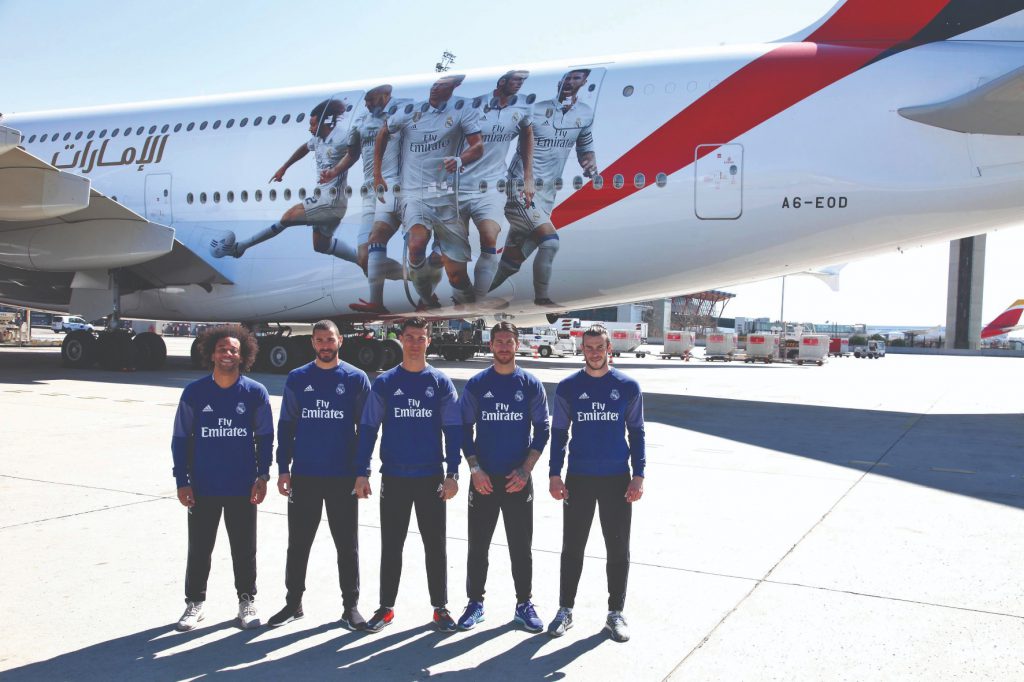Business Of Sport
Merchandising Is Key To The Growth Of Sport
Sponsoring kit turns players into billboards, and taking into account athletes who have cult like status and the global reach of sport, apparel deals provide a lot of bang for a brand’s buck. It’s no wonder that a strip on a jersey, which offers exposure to millions of consumers, has become expensive real estate – even more in demand than a parking spot in Camps Bay.
The more popular the team or player, the greater the investment, but the greater the potential return. And no-one has sold like former England and Manchester United (ManU) star David Beckham, whose relationship with Adidas was worth millions. The German kit supplier estimated that a whopping 10 million replica Beckham shirts were sold during Beckham’s 20-year playing career.
There have been a number of record kit deals in recent times with Real Madrid and Emirates concluding a shirt sponsorship deal worth €70-million during each of the next five years, making it the most lucrative deal ever in world football – ahead of FC Barcelona’s deal with Rakuten and ManU’s deal with Chevrolet.
David Sidenberg, CEO of BMi Sport Info, explains that there are two types of kit sponsorship – either with core brands whose business is to sell kit and then with brands like cellphone companies or banks who are in it for the association.
“We’re going to see kit brand wars with the soccer World Cup – brace yourself for Nike vs Adidas vs Puma vs New Balance. Selling jerseys is a huge market globally,” he said.
Replica kit is a triple bonus for manufacturers: there’s the potential of a tidy return from retail; the kit further increases their brand’s exposure; and it reinforces the brand’s positions as leaders in the global sporting apparel market. According to business intelligence and market research company Statista, from 2007 to 2018 $62.8-billion was spent on sports sponsorship globally.
Some teams are opting to take merchandising in-house. Barcelona has taken control of their own merchandising from Nike, its kit sponsors. In June, sportspromedia.com reported that Barcelona had announced the formation of a new wholly-owned company called Barça Licensing and Merchandising to manage their retail, licensing and merchandising rights. Nike had managed the team’s merchandising rights for 16 years through a separate company. But the contract expired on 1 July 2018.
Barcelona believed the move would ensure “greater economic profitability, direct control of the brand, the possibility of offering our fans a 100 per cent Barca experience, and a boost to innovation and new technologies.” Barcelona has over 7 000 products across the range which bring in an annual turnover of €65-million.
So how does South Africa’s kit sponsorship market compare internationally?
South African sports marketing specialists claim that apparel brands are increasingly wondering whether their brand emblazoned on a team’s jersey makes sense. Sidenberg adds that while passion for soccer is massive in South Africa, selling jerseys was more difficult in a local context where most people can’t afford to spend between R800 and R1 000 on a jersey. “These manufacturers want to sell lots of kit but they can’t compromise on quality and bring out cheap replicas.”
Darryl Kroll, the GM Commercial at DHL Stormers, says owning the team’s merchandise creates “great camaraderie between supporters and the team – by them owning the team’s merchandise”. It entrenches the brand with supporters, making them feel part of the team through the purchase of the team jersey, for example.
Six years ago, when the Blue Bulls transformed into the Pink Bulls with Puma launching the team’s more colourful second strip, many expected jersey sales to tank. But despite memes rolling out faster than a Bryan Habana dash to the tryline, the jerseys sold well – because the Bulls were closer to winning than they are now.
According to Sidenberg, for non-manufacturing brands, sponsoring a team’s kit is a marketing tool, which can boost the relationship between brands and consumers.
He said sponsoring a team’s kit provides a positive brand association and helps brands target consumers when they are enjoying their favourite pastime – watching sport (unless they were an Australian cricket fan watching the third test match against South Africa this year).
Sidenberg said this type of sponsorship’s ROI is measured through the “brand effect” – namely, the media value, association between the team and the sponsor, and brand awareness.
In the age of social media, brands have many opportunities to promote their message. Having a brand’s name on a team jersey may be “old school” in terms of a marketing strategy, but it’s still considered a “no-brainer”.





